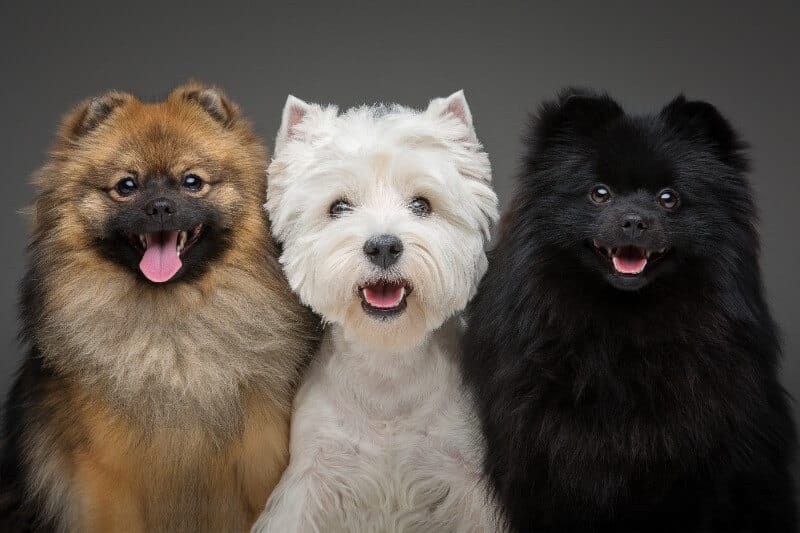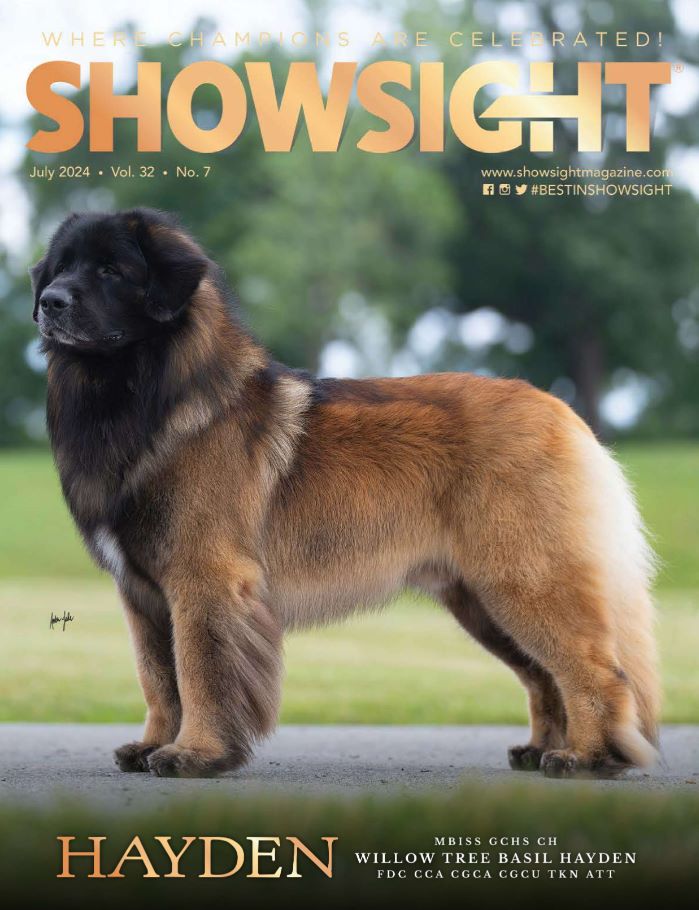While there are several hundred judges approved to judge West Highland White Terriers, most dog shows assign Westies to one of the 154 judges also approved to judge the entire Terrier Group. These Terrier Group judges include 72 whose initial breed was one of the Terriers, but only four whose initial breed was Westies. (Compiled from the AKC website)
Evaluating dogs requires the abilities to see soundness, such as movement, and specific breed characteristics. Like most Breed Standards, the West Highland White Terrier Standard addresses both within a general description, though not explicitly. Soundness is easy to see and to explain to observers outside the ring.
The remainder of this article intends to help judges, exhibitors, and observers understand breed type better, and to help improve the evaluation of Westie conformation by highlighting what sets Westies apart from other breeds.
Understanding Westie type requires knowledge of the breed’s origin and history. When our family was in Scotland years ago, we saw why the Westie’s origin dictated most of the breed’s specific characteristics—a rough terrain and an inhospitable, cool climate.
The second factor shaping the breed was its purpose in the 19th century; to hunt and go-to-ground after vermin. Vermin are wild, underground animals such as rodents and badgers that were believed to be harmful to crops and farm animals. Westies should have been able to subdue and even kill them.
Today, we are almost two centuries later and America is a far distant and very different land. Westies are not doing the work for which the breed was developed. Today, they are valued and loved largely because of what the breeders in Scotland had instilled in the breed; a distinctive appearance and a wonderful personality that is independent, alert, and loving. (We have lived with them, bred them, and shown them for over 60 years!)
Balance, Coat, Head & Personality
Balance, coat, head, and personality are largely what set Westies apart today from most other breeds. The AKC’s Westie Standard begins with a description of the general appearance as a “well-balanced hardy-looking terrier” and “a compact dog, with good balance and substance” with a coat that “is about two inches long, white in color, hard, with plenty of soft undercoat.”
It also states that a Westie should have “a typical Westie expression,” described as “piercing, inquisitive, pert.” It defines temperament, which should be reflected in expression, as “Alert, gay, courageous and self-reliant, but friendly.”
The following sections elaborate on balance, coat, expression, and temperament.
Balance
Balance is more than the ratio of length of back to height at the withers. While ideal height at the withers is 11 inches for males and 10 inches for bitches, a slight deviation should not be penalized. Balance also includes other characteristics such as spring and depth of rib, and legs set under well laid-back shoulders. For proper balance, shoulder blades should have definite chest overhang before them. Proportions are part of balance. Westies’ front legs should have equal distances from elbow to withers and elbow to ground. Rear legs should be muscular and well angulated so that Westies can run fast to catch their prey, and their short hocks should be well bent.
Coat
Coat is a very important breed characteristic. It helped to distinguish Westies from vermin coming out of the hole. The Standard distinguishes between the outer and inner undercoats. The outer coat protects Westies from the bramble and other rough conditions above and underground in their native Scotland. It should be about two inches long, hard, straight, and white without being bleached, which brightens the coat but changes its texture. The coat on the neck and shoulders should be shorter, and blended and trimmed into the longer furnishings on the stomach and legs. The ample, inner coat is a soft undercoat which serves to keep Westies warm in cool Scotland.
Head
Head should have a broad skull and muzzle so that it has the power to fight fierce vermin like badgers. The head should be shaped to appear round, with widely set apart and erect ears. Eyes should be dark and almond-shaped. Expression is probably seen best in the Westie’s eyes, which are a key to how Westies see their relationship to the world.
Temperament
Temperament is perhaps the Westie’s most endearing characteristic. Westies should reflect an independent attitude and display dominance over their environment. Westies are independent but outgoing, and give their attention and love because they choose to do so—not because it is asked of them. They used to hunt in packs, so it is important that they stand their ground but are not aggressive toward other Westies.
If this sounds like an apotheosis of Westies—it is!
West Highland White Terrier Breed Magazine
Showsight Magazine is the only publication to offer dedicated Digital Breed Magazines for ALL recognized AKC Breeds.
Read and learn more about the loyal West Highland White Terrier dog breed with articles and information in our West Highland White Terrier Breed Magazine.
Error embedding FlippingBook shortcode, please check the flipbook url. (https://digital.showsightmagazine.com/view/705211/)
If you enjoy the West Highland White Terrier Breed Magazine, help us educate the community by sharing it.









